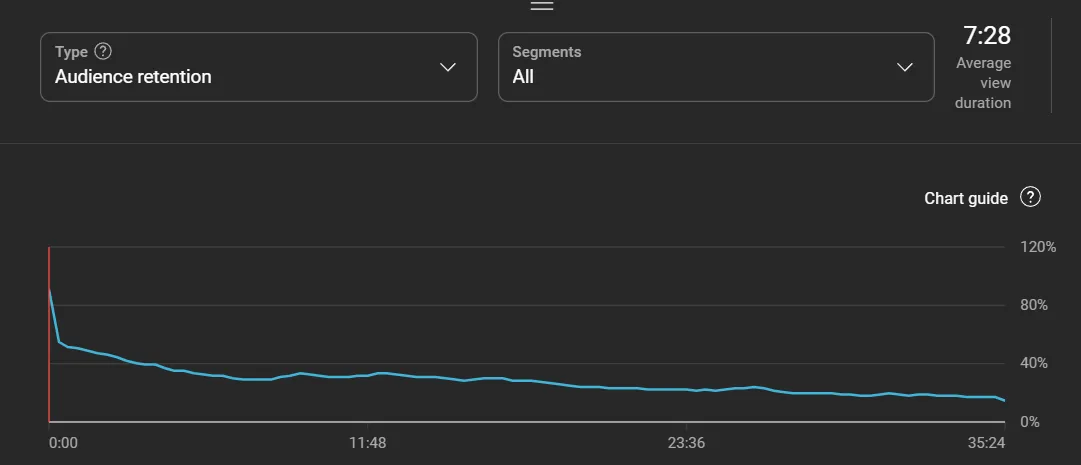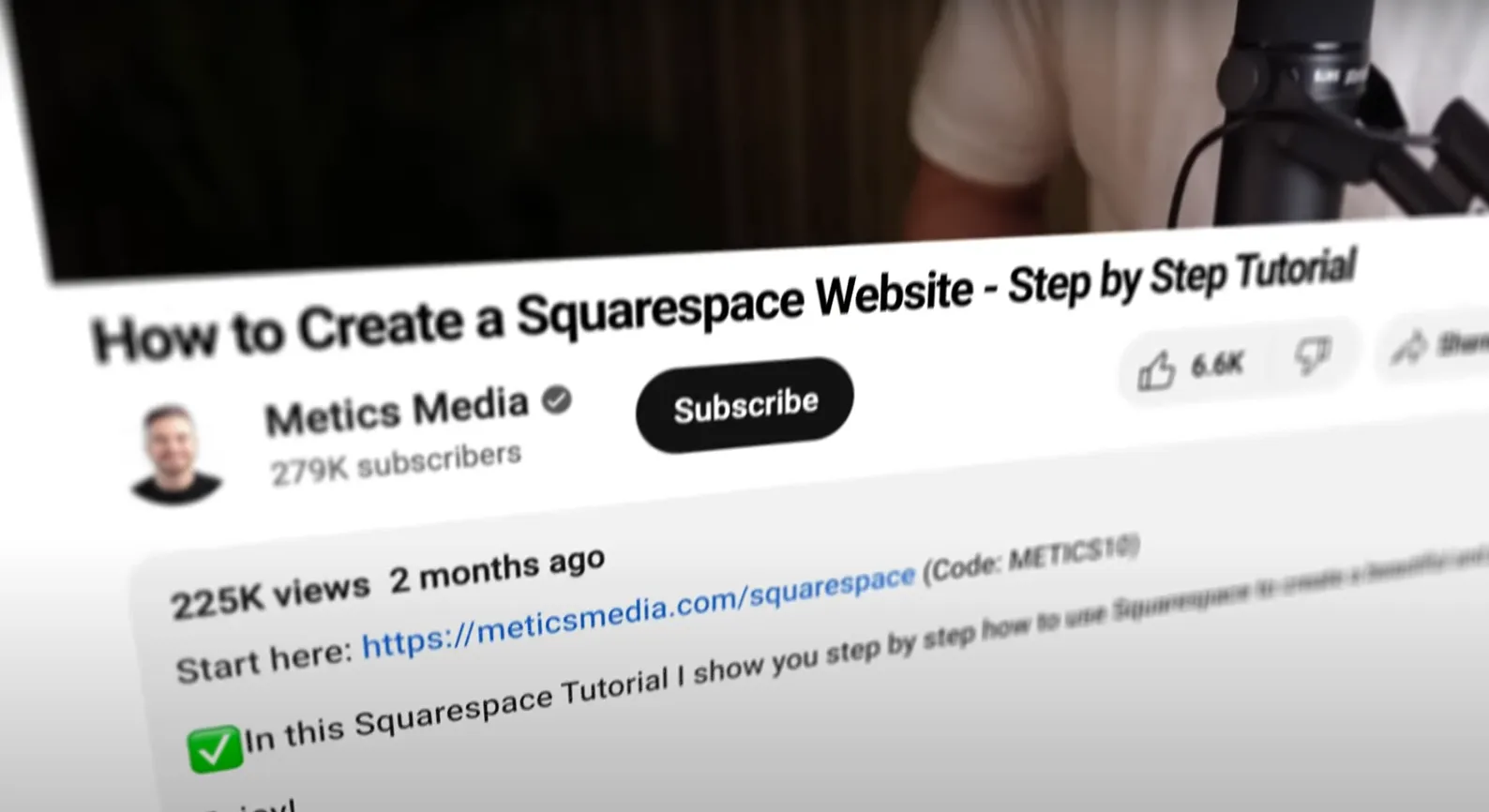Getting someone to click on your YouTube video is just the first step. The real challenge? Keeping them watching and, more importantly, turning them into a subscriber, a customer, or an engaged fan.
YouTube’s algorithm heavily favors watch time, engagement, and viewer retention. If people drop off within the first few seconds, your video will struggle to rank, no matter how great your title or thumbnail is.
A well-structured script ensures your audience stays hooked from the first second to the last, leading to more likes, comments, shares, and conversions.
But a good script does more than just retain viewers. It strategically moves them toward taking action. Whether you want them to hit that subscribe button, visit your website, or buy your product, your script must guide them seamlessly from interest to decision.
In this guide, we’ll break down a proven video script template designed to maximize engagement, keep people watching, and drive real results.
AIDA
One of the most powerful frameworks for structuring engaging content is AIDA: Attention, Interest, Desire, and Action. Originally a copywriting principle, AIDA is just as effective for video scripting because it mirrors the way people consume content and make decisions.
1. Attention
The first few seconds of your video determine whether someone stays or bounces. You need a hook, something that instantly grabs attention. This could be a bold statement, an intriguing question, a surprising fact, or even a quick teaser of what’s coming.
Example template
"Did you know that 90% of YouTube videos never get recommended? Today, I’m going to show you exactly how to make sure yours does."
2. Interest
Once you’ve captured attention, keep the viewer engaged by introducing the topic in a way that resonates with them. This is where storytelling comes in. People connect with stories more than just dry facts. You don’t have to create a dramatic narrative, just make it relatable.
Example template
"When I first started, my videos barely got any views. I thought I was doing everything right, but the results said otherwise. Then I discovered a simple formula that changed everything..."
3. Desire
Now that the audience is hooked, make them want what you’re offering. This is where you highlight the benefits of the solution you’re about to share. Show them what’s in it for them. Use social proof, examples, or results to build credibility.
Example template
"This script structure helped me triple my watch time and grow my channel to 100,000 subscribers. And the best part? It’s super easy to use."
4. Action
Don’t leave your viewers guessing what to do next. Whether you want them to subscribe, click a link, or buy something, be clear and direct with your call to action. The best CTAs make the viewer feel like they’ll miss out if they don’t act.
Example template
"If you want more in-depth strategies like this, hit subscribe now so you don’t miss my next video. And if you’re serious about growing your channel, check out the link in the description for my free YouTube growth guide."
Video Structure
A great script isn’t just about what you say, it’s about how and when you say it. A well-structured video should flow logically, keeping viewers engaged and emotionally invested while leading them toward a specific action.
Think of your video like a story: it needs a strong beginning to hook attention, a compelling middle that delivers value, and a satisfying end that nudges viewers to take action. Below is a detailed breakdown of the ideal high-retention video structure with templates for each section.
The Hook: First 5 Seconds Matter
The opening of your video is the most critical part because YouTube viewers are notorious for their short attention spans. If you don’t hook them within the first 5 seconds, they’ll scroll away, and your video’s performance will tank.

To create a strong hook, use one of these tactics:
- A shocking statistic or fact: "90% of YouTube videos fail because they don’t follow this simple rule!"
- A question that sparks curiosity: "What if I told you that your YouTube script is ruining your channel?"
- A teaser for what’s coming: "By the end of this video, you’ll have a proven script that keeps viewers watching!"
- Addressing a pain point: "Struggling to keep people watching your videos? Here’s the fix."
Your goal is to make people think, I need to hear this.
The Setup: Context Relatability
Once you've hooked them, you need to quickly establish why they should keep watching. This section is where you introduce yourself (briefly, if necessary) and set up the problem you’re solving. The key is to make it relatable.
Viewers should feel like, This is exactly my struggle! This builds an emotional connection and keeps them invested in the video.
Example template
"When I first started YouTube, I thought all I needed was good content. But my videos weren’t getting any traction. Then I discovered that a great script makes all the difference."
Delivering the Value: The Core Content
This is the longest and most information-dense part of your video. It’s where you deliver the promised value in a structured way that keeps engagement high.
The biggest mistake here? Droning on without structure. A great way to keep things engaging is to break your content into steps, tips, or sections.
Best Practices for This Section:
- Use clear transitions between points so viewers don’t get lost (e.g., "That was step one, now let’s talk about step two—this is where most people mess up!")
- Alternate between explanation and examples to make concepts stick
- Reinforce key takeaways at regular intervals so they remember the main message
Example template for structuring content:
"Step 1: Nail your hook. Remember, if people leave in the first 5 seconds, your video dies. A great hook sounds like this…"
"Step 2: Keep your audience engaged by using storytelling. Here’s an example of how I do it in my videos…"
The Emotional Boost: Storytelling & Social Proof
Facts inform, but stories sell. If you want viewers to stay engaged, inject storytelling into your content. A personal anecdote, a customer success story, or even a relatable analogy can make your message more compelling.
Example of social proof:
"One of my students tried this script and doubled their watch time in just a month!"
People don’t just want information, they want to see proof that your advice works.
The Call to Action: Get Them to Act
Most creators fail at this step. They either don’t include a call to action (CTA) at all or they say something weak like, "If you want, you can subscribe."
A strong CTA is clear, direct, and gives a reason to act now.

Different types of CTAs:
- Subscription CTA: "If you want more game-changing YouTube strategies, hit subscribe now!"
- Engagement CTA: "Comment below with your biggest struggle when scripting videos, I reply to every comment!"
- Click-through CTA: "Grab my free script template in the description before it’s gone!"
Pro tip: If you want more clicks and conversions, phrase your CTA in a way that makes people feel like they’re missing out if they don’t act.
Additional Engagement Tips
Use Open Loops
An open loop is when you hint at something exciting that will be revealed later. This keeps people watching because they want to see the payoff.
Example:
"Stick around because, at the end, I’ll reveal the biggest mistake most YouTubers make when scripting their videos."
Pattern Interrupts: Keep It Visually Engaging
People zone out fast. Adding pattern interrupts, changes in visuals, camera angles, graphics, sound effects, or text overlays, keeps viewers engaged and focused.
Try these techniques:
- Cut to a different camera angle every 5-10 seconds.
- Use on-screen text to reinforce key points.
- Add B-roll footage related to what you're talking about.
- Use zoom-ins/outs to create visual dynamism.
Ask for Interaction
The more engagement your video gets (likes, comments, shares), the more YouTube promotes it. Instead of saying, "Leave a comment," make your ask specific and engaging.
Example CTA:
"Drop a 🔥 emoji if you’re excited to try this script!"
Good Audio is a Must
Bad audio kills engagement faster than bad video quality. Invest in a decent microphone, even a budget lavalier mic will instantly improve your video.
If your audio is echoey, try:
- Recording in a room with carpets, curtains, or soundproofing.
- Using background music at low volume to mask bad acoustics.
Tease the Next Video
One of the best ways to keep viewers on your channel is to tell them what to watch next.
Example template:
"If you liked this, my next video will show you the exact formula for writing viral YouTube titles, check it out here!"
This increases session watch time, which tells YouTube to promote your content more.